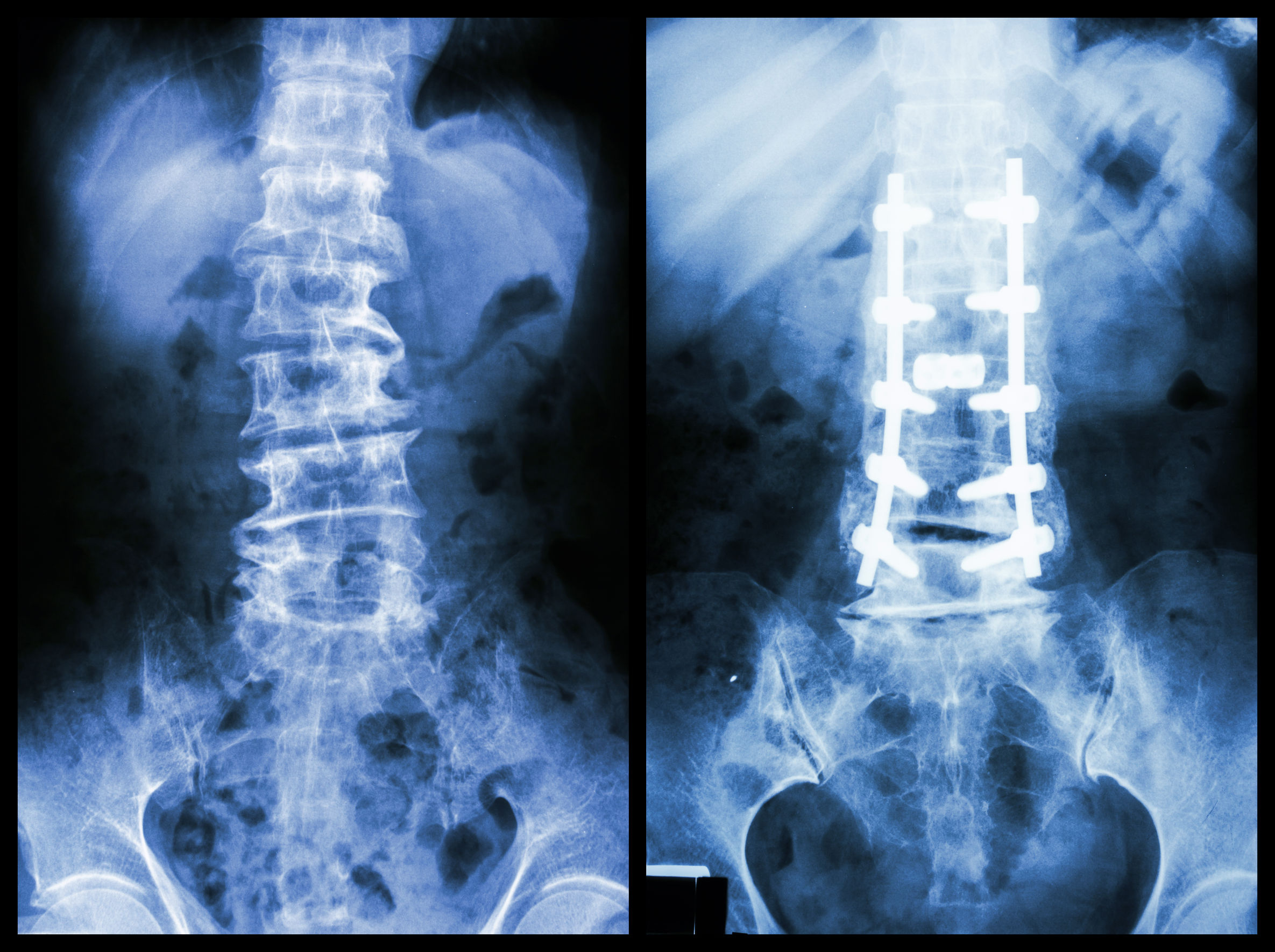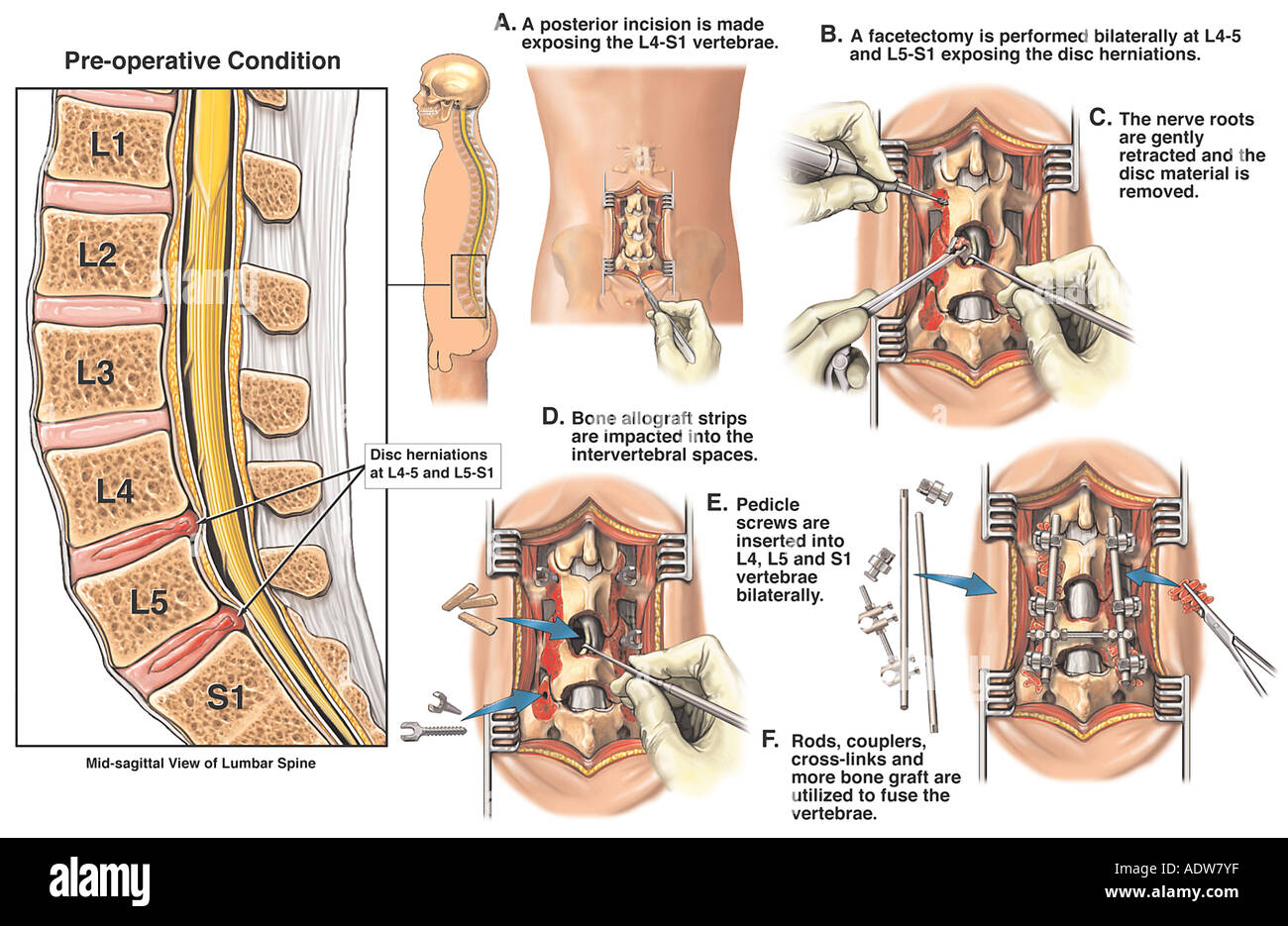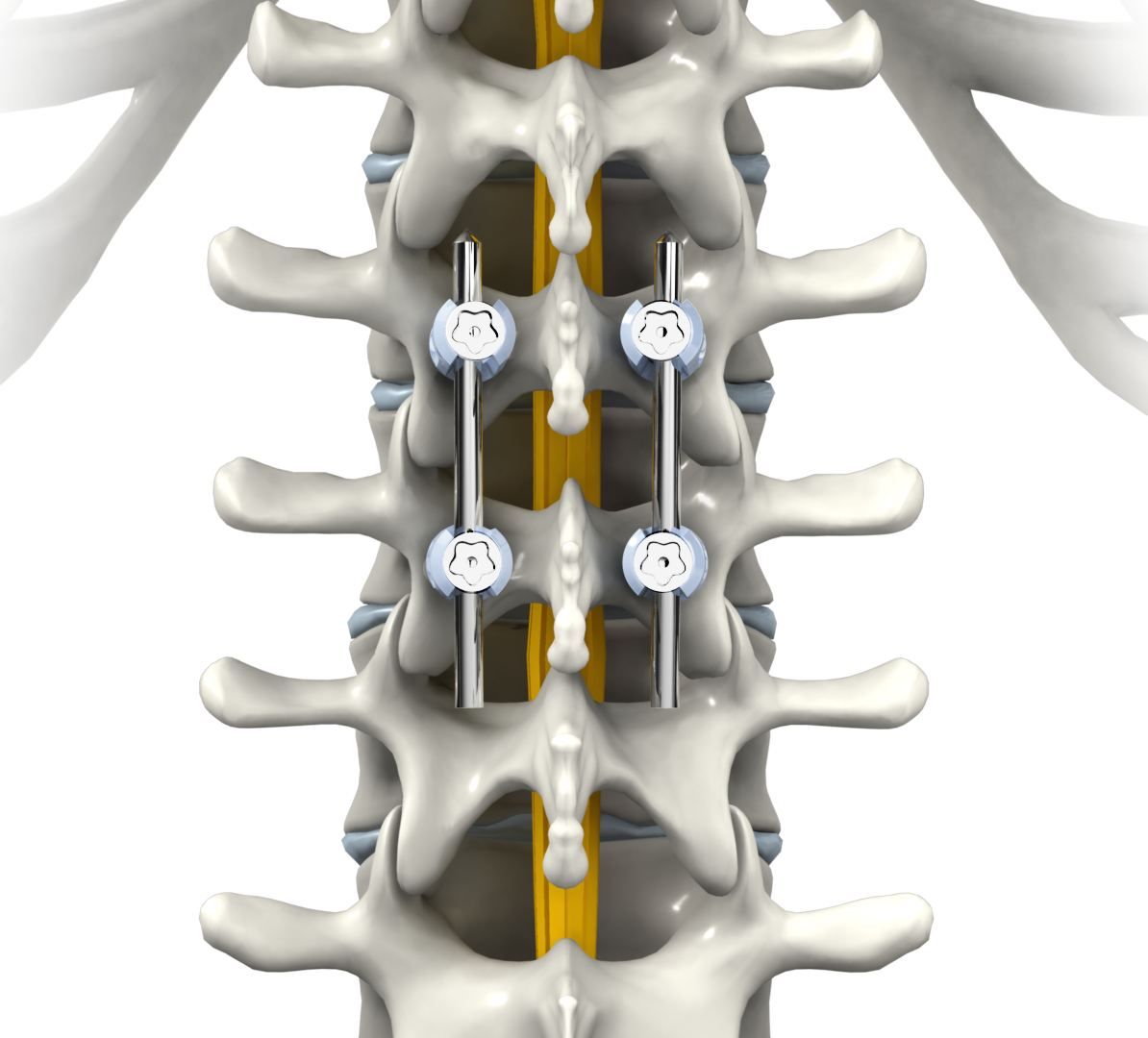

From the back, these cuts are in the neck or back directly over the spine or on either side of the spine. To get to the bones being fused, the surgeon cuts in one of three places. Generally, the procedure involves the following: The technique the surgeon uses depends on where the bones to be fused are on the spine, the reason for the spinal fusion, and possibly, general health and body shape.

There are several ways to do spinal fusion surgery. Surgeons perform spinal fusion while the person having the procedure is unconscious, known as general anesthesia. Either way, a metal plate or rods and screws will hold the bones together until the bones heal. From the back, it's known as posterior spinal fusion. For additional information visit Linking to and Using Content from MedlinePlus.A surgeon can get to the spine from the front, known as an anterior spinal fusion. Any duplication or distribution of the information contained herein is strictly prohibited without authorization. Links to other sites are provided for information only - they do not constitute endorsements of those other sites. A licensed physician should be consulted for diagnosis and treatment of any and all medical conditions. The information provided herein should not be used during any medical emergency or for the diagnosis or treatment of any medical condition. This site complies with the HONcode standard for trustworthy health information: verify here. Learn more about A.D.A.M.'s editorial policy editorial process and privacy policy. is among the first to achieve this important distinction for online health information and services. follows rigorous standards of quality and accountability. is accredited by URAC, for Health Content Provider (URAC's accreditation program is an independent audit to verify that A.D.A.M. Take the medicines you were told to take with a small sip of water.Ī.D.A.M., Inc.Follow instructions about not drinking or eating anything before the procedure.


These include medicines, herbs, and supplements you bought without a prescription. Tell your surgeon what medicines you are taking. They are used to keep the vertebrae from moving until the bone grafts are fully healed. The vertebrae may also be fixed together with rods, screws, plates, or cages. An artificial bone substitute and growth factors can also be used.Your surgeon will make a small cut over your pelvic bone and remove some bone from the back of the rim of the pelvis. From another part of your body (usually around your pelvic bone).The surgeon may get the bone graft from different places: These implantable cages are packed with bone graft material. Special cages may be placed between the vertebrae.Bone graft material may be placed between the vertebrae.Strips of bone graft material may be placed over the back part of the spine.There are several ways of fusing vertebrae together: The surgeon will use a graft (such as bone) to hold (or fuse) the bones together permanently. With a cut on the front of the neck, toward the side.The surgeon will use tools called retractors to gently separate, hold the soft tissues such as your bowels and blood vessels apart, and have room to work. On your side, if you are having surgery on your lower back.Muscles and tissue will be separated to expose the spine. Other surgery, such as a diskectomy, laminectomy, or a foraminotomy, is almost always done first. The surgeon will make a surgical cut (incision) to view the spine. You'll be given general anesthesia, which puts you into a deep sleep so you do not feel pain during surgery.


 0 kommentar(er)
0 kommentar(er)
